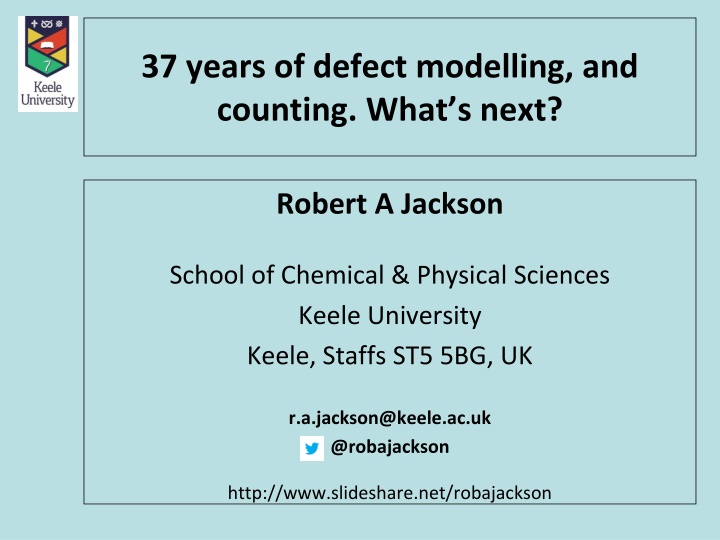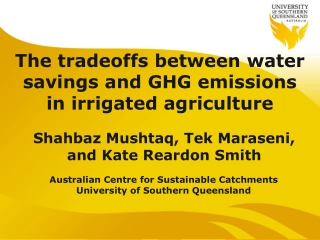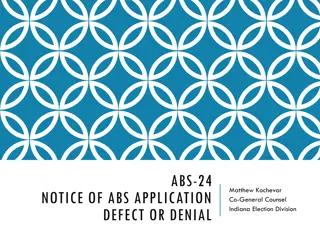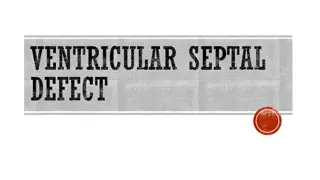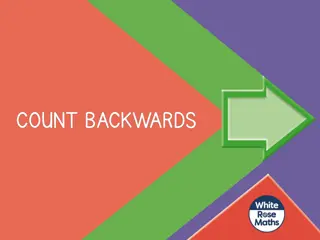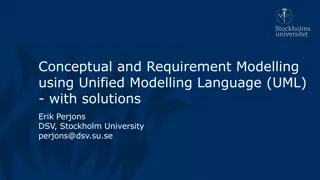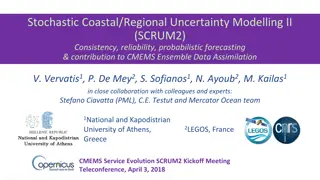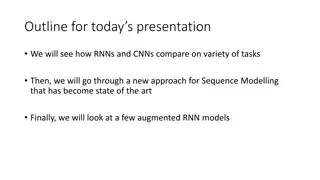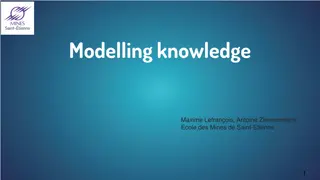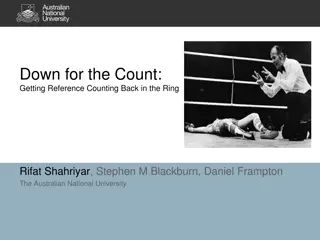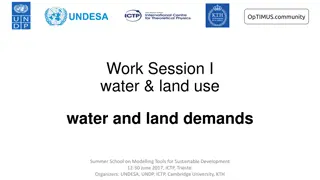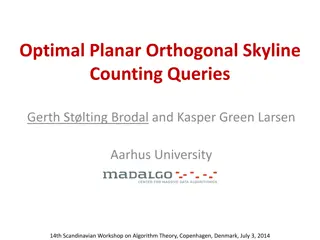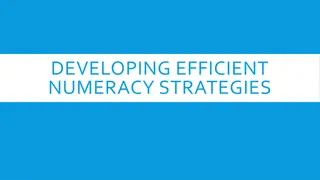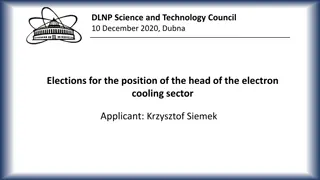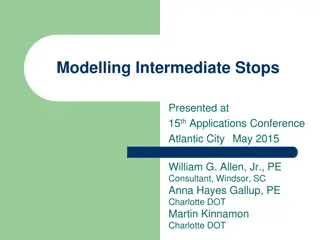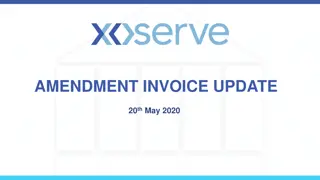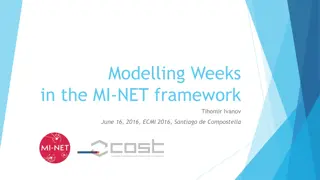37 years of defect modelling and counting.
Delve into the journey of 37 years of defect modelling with Robert A. Jackson, tracing back to PhD research and first postdoc experiences. Explore the evolution of computational tools and materials studied, with a glimpse into current and future work in the field.
Download Presentation

Please find below an Image/Link to download the presentation.
The content on the website is provided AS IS for your information and personal use only. It may not be sold, licensed, or shared on other websites without obtaining consent from the author.If you encounter any issues during the download, it is possible that the publisher has removed the file from their server.
You are allowed to download the files provided on this website for personal or commercial use, subject to the condition that they are used lawfully. All files are the property of their respective owners.
The content on the website is provided AS IS for your information and personal use only. It may not be sold, licensed, or shared on other websites without obtaining consent from the author.
E N D
Presentation Transcript
37 years of defect modelling, and counting. What s next? Robert A Jackson School of Chemical & Physical Sciences Keele University Keele, Staffs ST5 5BG, UK r.a.jackson@keele.ac.uk @robajackson http://www.slideshare.net/robajackson
Plan of talk 1. Even further back PhD research 2. First Postdoc fission gas in UO2 3. A brief Birkbeck experience 4. And so to Keele! Zeolites and Shell Kodak collaboration Molecular Ionic Materials Optical Materials UO2revisited Current work 5. What next? Some conclusions Modelling Surface and Defect Properties of Materials - UCL, 5-6 April 2018 2
Even further back PhD research Most of the calculations were carried out using UCL s IBM 360 computer, using punched cards. The computer store the source code back then, so that was also in the card deck My PhD was carried out under the supervision of DrStuart Walmsley, on Lattice Dynamics of Molecular Crystals. didn t 3 Modelling Surface and Defect Properties of Materials - UCL, 5-6 April 2018
The IBM 360 Cost $2M in 1966. Maximum memory for running calculations was about 100 kb! Picture shows card punch machine and control terminal. http://www.uh.edu/engines/epi1703.htm 4 Modelling Surface and Defect Properties of Materials - UCL, 5-6 April 2018
PhD research: modelling molecular solids Lattice calculations molecular solids: CO2, C2N2 and N2O4 Diagram shows the CO2 structure ( dryice ) dynamics on 5 Modelling Surface and Defect Properties of Materials - UCL, 5-6 April 2018
First Postdoc - Fission gas in UO2 My first project with Richard using his UO2 potential and electron-gas potentials interactions. This was followed by development of a new potential, with John Harding and Andy Murray. to represent Xe-O 6 Modelling Surface and Defect Properties of Materials - UCL, 5-6 April 2018
Digression - Fission gas in UO2 2018 style Some of the calculations published in 1985 were repeated by a project student this year, using GULP instead of HADES. Similar results were obtained, although further analysis is needed. The previous calculations were run on a mainframe computer at Harwell, using a dial-up link from UCL, while the recent ones were run on a networked PC using Putty to connect (: Modelling Surface and Defect Properties of Materials - UCL, 5-6 April 2018 7
A new UO2 potential This new potential was fitted to lattice parameter measurements, and included calculations of the entropy of formation of defects using John Harding s SHEOL code. 8 Modelling Surface and Defect Properties of Materials - UCL, 5-6 April 2018
A brief Birkbeck experience I then spent nearly two years working as a postdoc for Dr Paul Barnes at Birkbeck, in the Crystallography Department (with Tom Blundell as HoD). The project was an early attempt to model hydration in minerals. I used the ATMOL code, and some preliminary results were published Paul in an atypical pose. (Maybe he took up drinking after I left!) Modelling Surface and Defect Properties of Materials - UCL, 5-6 April 2018 9
J. Chem. Phys., 93, 3573-3577 (1990) 10 Modelling Surface and Defect Properties of Materials - UCL, 5-6 April 2018
A move to Keele In 1986 I joined Richard s group at Keele. A 2-year contract that turned into a career! I shared an office with the gentlemen below (Robin Grimes Rajappan Vetrivel). and Photos from 1987 11 Modelling Surface and Defect Properties of Materials - UCL, 5-6 April 2018
Modelling zeolites (Shell) Earlier work by Richard, Steve Parker, Mick Sanders and Maurice Leslie had led to potentials initially for SiO2 which were later applied to zeolites. My project was funded by Shell, working with Rutger van Santen and Gijs Ooms: During this project I visited and worked at Shell s KSLA lab in Amsterdam. Modelling Surface and Defect Properties of Materials - UCL, 5-6 April 2018 12
This project produced a paper which has been used by many people starting work on zeolites: 13 Modelling Surface and Defect Properties of Materials - UCL, 5-6 April 2018
Kodak collaboration Photo taken at a meeting held in London (Ontario) in 1989 in honour of Patrick Jacobs. (With Patrick and Yen Tan). After collaboration finished, I was part-funded Kodak (Rochester, NY) for 2 years to work on PZT, PLZT and related materials. During this time I was working with Baetzold (right). the Shell by Richard, Roger 14 Modelling Surface and Defect Properties of Materials - UCL, 5-6 April 2018
Molecular ionic materials Another change of direction led to work on molecular ionic materials, with Kevin Roberts and David Price. Calcium carbonate has been much studied since, but one of the earlier papers was the one shown top right. The other paper describes potential derivation perchlorates and an excursion into morphological modelling (next slide). for 15 Modelling Surface and Defect Properties of Materials - UCL, 5-6 April 2018
Calculation of morphologies: surface and attachment energies. Modelling Surface and Defect Properties of Materials - UCL, 5-6 April 2018 16
Optical materials My materials started through a collaboration with M rio Valerio. This modelling dopants in mixed metal fluorides predicting location & optical behaviour. As the photo discussion and refreshment are important! interest in optical involved and shows, 17 Modelling Surface and Defect Properties of Materials - UCL, 5-6 April 2018
A renaissance of nuclear fuels modelling My return to modelling nuclear fuels was around 2010, and coincided with a new collaboration with Mark Read. Using his potential methodology, we derived new potentials for UO2 and subsequently, PuO2. fitting 18 Modelling Surface and Defect Properties of Materials - UCL, 5-6 April 2018
Current work - (i) lithium niobate Lithium niobate had earlier been modelled by Richard, Simon Tomlinson and Hans Donnerberg,but the enduring interest in the material led to the derivation of a new potential. Papers from then (1991) and 2007 are shown: 19 Modelling Surface and Defect Properties of Materials - UCL, 5-6 April 2018
Lithium niobate current projects Location of dopants some properties (e.g. those responsible for holographic behaviour) are enhanced by doping with a range of 2+ and 3+ ions. Their location is a matter of debate when modelling results are compared with EXAFS results. Modelling of concentration effects a recent MPhil student (Ellis Hedges) used supercell calculations to model realistic levels of dopants in LiNbO3. He also modelled the congruent phase. Writing this work up is at the top of my list! Modelling Surface and Defect Properties of Materials - UCL, 5-6 April 2018 20
Current work - (ii) mixed anionic materials This is very recent work, and has so far only been pumpprimed by two final year research projects. These are materials like LaOF, where as well as doping 3+ ions at the La site, it is possible to change the O:F ratio so that 2+ or 4+ ions can be doped into the structure. LaOF has some interesting applications as a host material for phosphors (with rare earth dopants), and there are potentially other applications with divalent or tetravalent dopants. Modelling Surface and Defect Properties of Materials - UCL, 5-6 April 2018 21
What next? Some conclusions Getting research funding externally has become difficult, and there are issues like the need to be in a CDT to get EPSRC funding for PhD students etc. Taking on major admin roles like Acting Head of School doesn t help either (but that finished at the end of March!) I have been able to keep research going through collaborations, and with the help of some PhD and MPhil students. There are lots of interesting materials and problems to study, and I hope to continue doing this. Modelling Surface and Defect Properties of Materials - UCL, 5-6 April 2018 22
Acknowledgements Thanks to Richard, Nora and Zhimei who have very kindly organised meeting. Thanks to everyone who has helped me at various points in my career. And finally, thanks to you for attending the meeting and listening! this 23 Modelling Surface and Defect Properties of Materials - UCL, 5-6 April 2018
Unfortunately the Gnome was too infirm to make the trip, but sends his best wishes to all!
